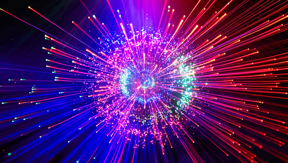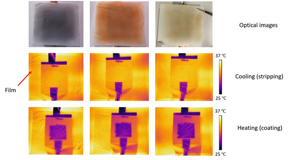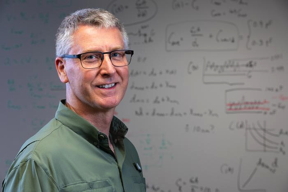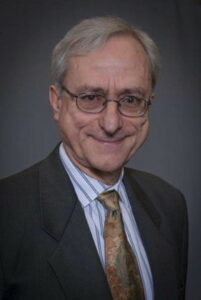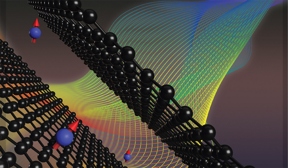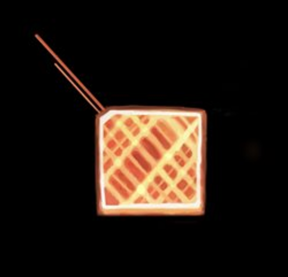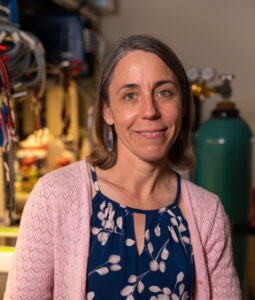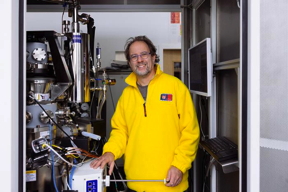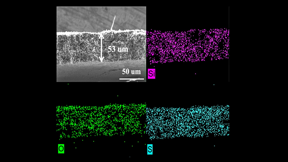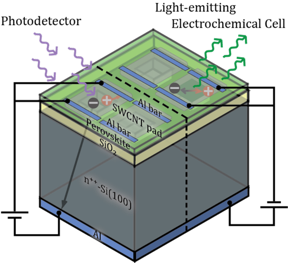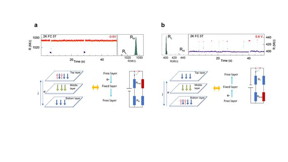Home > Press > Researchers at Purdue discover superconductive images are actually 3D and disorder-driven fractals
 |
Abstract:
Meeting the world’s energy demands is reaching a critical point. Powering the technological age has caused issues globally. It is increasingly important to create superconductors that can operate at ambient pressure and temperature. This would go a long way toward solving the energy crisis.
Researchers at Purdue discover superconductive images are actually 3D and disorder-driven fractals
West Lafayette, IN | Posted on May 12th, 2023Advancements with superconductivity hinge on advances in quantum materials. When electrons inside of quantum materials undergo a phase transition, the electrons can form intricate patterns, such as fractals. A fractal is a never-ending pattern. When zooming in on a fractal, the image looks the same. Commonly seen fractals can be a tree or frost on a windowpane in winter. Fractals can form in two dimensions, like the frost on a window, or in three-dimensional space like the limbs of a tree.
Dr. Erica Carlson, a 150th Anniversary Professor of Physics and Astronomy at Purdue University, led a team that developed theoretical techniques for characterizing the fractal shapes that these electrons make, in order to uncover the underlying physics driving the patterns.
Carlson, a theoretical physicist, has evaluated high resolution images of the locations of electrons in the superconductor Bi2-xPbzSr2-yLayCuO6+x (BSCO), and determined that these images are indeed fractal and discovered that they extend into the full three-dimensional space occupied by the material, like a tree filling space.
What was once thought of as random dispersions within the fractal images are purposeful and, shockingly, not due to an underlying quantum phase transition as expected, but due to a disorder-driven phase transition.
Carlson led a collaborative team of researchers across multiple institutions and published their findings, titled "Critical nematic correlations throughout the superconducting doping range in Bi2-xPbzSr2-yLayCuO6+x," in Nature Communications.
The team includes Purdue scientists and partner institutions. From Purdue, the team includes Carlson, Dr. Forrest Simmons, recent PhD student, and former PhD students Dr. Shuo Liu and Dr. Benjamin Phillabaum. The Purdue team completed their work within the Purdue Quantum Science and Engineering Institute (PQSEI). The team from partner institutions includes Dr. Jennifer Hoffman, Dr. Can-Li Song, Dr. Elizabeth Main of Harvard University, Dr. Karin Dahmen of the University of Urbana-Champaign, and Dr. Eric Hudson of Pennsylvania State University.
“The observation of fractal patterns of orientational (‘nematic’) domains – cleverly extracted by Carlson and collaborators from STM images of the surfaces of crystals of a cuprate high temperature superconductor – is interesting and aesthetically appealing on its own, but also of considerable fundamental importance in coming to grips with the essential physics of these materials,” says Dr. Steven Kivelson, the Prabhu Goel Family Professor at Stanford University and a theoretical physicist specializing in novel electronic states in quantum materials. “Some form of nematic order, typically thought to be an avatar of a more primitive charge-density-wave order, has been conjectured to play an important role in the theory of the cuprates, but the evidence in favor of this proposition has previously been ambiguous at best. Two important inferences follow from Carlson et al.’s analysis: 1) The fact that the nematic domains appear fractal implies that the correlation length – the distance over which the nematic order maintains coherence – is larger than the field of view of the experiment, which means that it is very large compared to other microscopic scales. 2) The fact that patterns that characterize the order are the same as those obtained from studies of the three dimensional random-field Ising model – one of the paradigrmatic models of classical statistical mechanics – suggests that the extent of the nematic order is determined by extrinsic quantities and that intrinsically (i.e. in the absence of crystalline imperfections) it would exhibit still longer range correlations not just along the surface, but extending deep into the bulk of the crystal.”
High resolution images of these fractals are painstakingly taken in Hoffman’s lab at Harvard University and Hudson’s lab, now at Penn State, using scanning tunneling microscopes (STM) to measure electrons at the surface of the BSCO, a cuprate superconductor. The microscope scans atom by atom across the top surface of the BSCO, and what they found was stripe orientations that went in two different directions instead of the same direction. The result, seen above in red and blue, is a jagged image that forms interesting patterns of electronic stripe orientations.
“The electronic patterns are complex, with holes inside of holes, and edges that resemble ornate filigree,” explains Carlson. “Using techniques from fractal mathematics, we characterize these shapes using fractal numbers. In addition, we use statistics methods from phase transitions to characterize things like how many clusters are of a certain size, and how likely the sites are to be in the same cluster.”
Once the Carlson group analyzed these patterns, they found a surprising result. These patterns do not form only on the surface like flat layer fractal behavior, but they fill space in three dimensions. Simulations for this discovery were carried out at Purdue University using Purdue’s supercomputers at Rosen Center for Advanced Computing. Samples at five different doping levels were measured by Harvard and Penn State, and the result was similar among all five samples.
The unique collaboration between Illinois (Dahmen) and Purdue (Carlson) brought cluster techniques from disordered statistical mechanics into the field of quantum materials like superconductors. Carlson’s group adapted the technique to apply to quantum materials, extending the theory of second order phase transitions to electronic fractals in quantum materials.
“This brings us one step closer to understanding how cuprate superconductors work,” explains Carlson. “Members of this family of superconductors are currently the highest temperature superconductors that happen at ambient pressure. If we could get superconductors that work at ambient pressure and temperature, we could go a long way toward solving the energy crisis because the wires we currently use to run electronics are metals rather than superconductors. Unlike metals, superconductors carry current perfectly with no loss of energy. On the other hand, all the wires we use in outdoor power lines use metals, which lose energy the whole time they are carrying current. Superconductors are also of interest because they can be used to generate very high magnetic fields, and for magnetic levitation. They are currently used (with massive cooling devices!) in MRIs in hospitals and levitating trains.”
Next steps for the Carlson group are to apply the Carlson-Dahmen cluster techniques to other quantum materials.
“Using these cluster techniques, we have also identified electronic fractals in other quantum materials, including vanadium dioxide (VO2) and neodymium nickelates (NdNiO3). We suspect that this behavior might actually be quite ubiquitous in quantum materials,” says Carlson.
This type of discovery leads quantum scientists closer to solving the riddles of superconductivity.
“The general field of quantum materials aims to bring to the forefront the quantum properties of materials, to a place where we can control them and use them for technology,” Carlson explains. “Each time a new type of quantum material is discovered or created, we gain new capabilities, as dramatic as painters discovering a new color to paint with."
Funding for the work at Purdue University for this research includes the National Science Foundation, the Bilsland Dissertation Fellowship (for Dr. Liu), and Research Corporation for Science Advancement.
####
About Purdue University
Purdue University is a top public research institution developing practical solutions to today’s toughest challenges. Ranked in each of the last five years as one of the 10 Most Innovative universities in the United States by U.S. News & World Report, Purdue delivers world-changing research and out-of-this-world discovery. Committed to hands-on and online, real-world learning, Purdue offers a transformative education to all. Committed to affordability and accessibility, Purdue has frozen tuition and most fees at 2012-13 levels, enabling more students than ever to graduate debt-free. See how Purdue never stops in the persistent pursuit of the next giant leap at https://stories.purdue.edu .
About the Department of Physics and Astronomy at Purdue University
Purdue Department of Physics and Astronomy has a rich and long history dating back to 1904. Our faculty and students are exploring nature at all length scales, from the subatomic to the macroscopic and everything in between. With an excellent and diverse community of faculty, postdocs, and students who are pushing new scientific frontiers, we offer a dynamic learning environment, an inclusive research community, and an engaging network of scholars.
Physics and Astronomy is one of the seven departments within the Purdue University College of Science. World-class research is performed in astrophysics, atomic and molecular optics, accelerator mass spectrometry, biophysics, condensed matter physics, quantum information science, particle and nuclear physics. Our state-of-the-art facilities are in the Physics Building, but our researchers also engage in interdisciplinary work at Discovery Park District at Purdue, particularly the Birck Nanotechnology Center and the Bindley Bioscience Center. We also participate in global research including at the Large Hadron Collider at CERN, Argonne National Laboratory, Brookhaven National Laboratory, Fermilab, the Stanford Linear Accelerator, the James Webb Space Telescope, and several observatories around the world.
About the Purdue Quantum Science and Engineering Institute (PQSEI)
Located in Discovery Park District, PQSEI fosters the development of practical and impactful aspects of quantum science and focuses on discovering and studying new materials, devices, and basic physical quantum systems that will be suited for integration into tomorrow’s technology. It encourages interdisciplinary collaboration leading to the design and realization of quantum devices with enhanced functionality and performance close to the fundamental limit, aiming to ultimately bring them to a vast community of users. PQSEI faculty work on a broad range of topics in quantum science and engineering including quantum materials and devices, quantum photonics, atomic molecular and optical physics, quantum chemistry, quantum measurement and control, quantum simulation, and quantum information and computing. Finally, PQSEI works to train the next generation of quantum scientists and engineers in order to meet the growing quantum workforce demands.
For more information, please click here
Contacts:
Brittany Steff
Purdue University
Office: 765-494-7833
Copyright © Purdue University
If you have a comment, please Contact us.Issuers of news releases, not 7th Wave, Inc. or Nanotechnology Now, are solely responsible for the accuracy of the content.
| Related Links |
| Related News Press |
News and information
![]() Laser direct writing of Ga2O3/liquid metal-based flexible humidity sensors May 12th, 2023
Laser direct writing of Ga2O3/liquid metal-based flexible humidity sensors May 12th, 2023
![]() Breakthrough in the optical properties of MXenes - two-dimensional heterostructures provide new ideas May 12th, 2023
Breakthrough in the optical properties of MXenes - two-dimensional heterostructures provide new ideas May 12th, 2023
![]() Novel design perovskite electrochemical cell for light-emission and light-detection May 12th, 2023
Novel design perovskite electrochemical cell for light-emission and light-detection May 12th, 2023
Superconductivity
Govt.-Legislation/Regulation/Funding/Policy
![]() Optical switching at record speeds opens door for ultrafast, light-based electronics and computers: March 24th, 2023
Optical switching at record speeds opens door for ultrafast, light-based electronics and computers: March 24th, 2023
![]() Robot caterpillar demonstrates new approach to locomotion for soft robotics March 24th, 2023
Robot caterpillar demonstrates new approach to locomotion for soft robotics March 24th, 2023
![]() Semiconductor lattice marries electrons and magnetic moments March 24th, 2023
Semiconductor lattice marries electrons and magnetic moments March 24th, 2023
Possible Futures
![]() Laser direct writing of Ga2O3/liquid metal-based flexible humidity sensors May 12th, 2023
Laser direct writing of Ga2O3/liquid metal-based flexible humidity sensors May 12th, 2023
![]() Breakthrough in the optical properties of MXenes - two-dimensional heterostructures provide new ideas May 12th, 2023
Breakthrough in the optical properties of MXenes - two-dimensional heterostructures provide new ideas May 12th, 2023
![]() Novel design perovskite electrochemical cell for light-emission and light-detection May 12th, 2023
Novel design perovskite electrochemical cell for light-emission and light-detection May 12th, 2023
Discoveries
![]() Laser direct writing of Ga2O3/liquid metal-based flexible humidity sensors May 12th, 2023
Laser direct writing of Ga2O3/liquid metal-based flexible humidity sensors May 12th, 2023
![]() Breakthrough in the optical properties of MXenes - two-dimensional heterostructures provide new ideas May 12th, 2023
Breakthrough in the optical properties of MXenes - two-dimensional heterostructures provide new ideas May 12th, 2023
Announcements
![]() Laser direct writing of Ga2O3/liquid metal-based flexible humidity sensors May 12th, 2023
Laser direct writing of Ga2O3/liquid metal-based flexible humidity sensors May 12th, 2023
![]() Breakthrough in the optical properties of MXenes - two-dimensional heterostructures provide new ideas May 12th, 2023
Breakthrough in the optical properties of MXenes - two-dimensional heterostructures provide new ideas May 12th, 2023
![]() Novel design perovskite electrochemical cell for light-emission and light-detection May 12th, 2023
Novel design perovskite electrochemical cell for light-emission and light-detection May 12th, 2023
Interviews/Book Reviews/Essays/Reports/Podcasts/Journals/White papers/Posters
![]() Laser direct writing of Ga2O3/liquid metal-based flexible humidity sensors May 12th, 2023
Laser direct writing of Ga2O3/liquid metal-based flexible humidity sensors May 12th, 2023
![]() Breakthrough in the optical properties of MXenes - two-dimensional heterostructures provide new ideas May 12th, 2023
Breakthrough in the optical properties of MXenes - two-dimensional heterostructures provide new ideas May 12th, 2023
![]() Novel design perovskite electrochemical cell for light-emission and light-detection May 12th, 2023
Novel design perovskite electrochemical cell for light-emission and light-detection May 12th, 2023
Energy
![]() Channeling mechanical energy in a preferred direction April 14th, 2023
Channeling mechanical energy in a preferred direction April 14th, 2023
![]() A universal HCl-assistant powder-to-powder strategy for preparing lead-free perovskites March 24th, 2023
A universal HCl-assistant powder-to-powder strategy for preparing lead-free perovskites March 24th, 2023
![]() Make them thin enough, and antiferroelectric materials become ferroelectric February 10th, 2023
Make them thin enough, and antiferroelectric materials become ferroelectric February 10th, 2023
- SEO Powered Content & PR Distribution. Get Amplified Today.
- PlatoAiStream. Web3 Data Intelligence. Knowledge Amplified. Access Here.
- Minting the Future w Adryenn Ashley. Access Here.
- Buy and Sell Shares in PRE-IPO Companies with PREIPO®. Access Here.
- Source: http://www.nanotech-now.com/news.cgi?story_id=57345
- :has
- :is
- :not
- :where
- 1
- 10
- 10th
- 28th
- 2D
- 2D materials
- 3d
- 3rd
- a
- above
- accelerator
- access
- accessibility
- accuracy
- across
- actually
- adapted
- addition
- advanced
- advancement
- advances
- age
- Aiming
- aims
- AL
- All
- along
- also
- Ambient
- among
- an
- analysis
- and
- Anniversary
- Announces
- appealing
- appear
- Apply
- approach
- April
- ARE
- Argonne National Laboratory
- around
- AS
- aspects
- astronomy
- astrophysics
- At
- atom
- Atomic and molecular
- avatar
- back
- basic
- BE
- because
- become
- been
- Benjamin
- BEST
- between
- Biophysics
- Blue
- Breaking
- bring
- Brings
- broad
- brought
- Brown University
- Building
- but
- by
- CAN
- candidate
- capabilities
- carbon
- Carlson
- carry
- carrying
- caused
- Center
- CERN
- certain
- CGI
- challenges
- characterize
- chemistry
- click
- Close
- closer
- Cluster
- collaboration
- collaborative
- College
- color
- COM
- coming
- comment
- committed
- commonly
- Communications
- community
- compared
- Completed
- complex
- computers
- computing
- Condensed matter
- conducting
- considerable
- content
- control
- Conversion
- CORPORATION
- Correlation
- could
- create
- created
- crisis
- critical
- Crystal
- Current
- Currently
- Dating
- debate
- deep
- delivers
- demands
- demonstrates
- Department
- departments
- Design
- determined
- develop
- developed
- developing
- Development
- Devices
- different
- dimensions
- direct
- direction
- directions
- discover
- discovered
- discovering
- discovery
- distance
- district
- diverse
- do
- domains
- Door
- dramatic
- driving
- due
- dynamic
- e
- E&T
- each
- Education
- Electronic
- Electronics
- electrons
- enabling
- encourages
- end
- energy
- energy crisis
- engage
- engaging
- Engineering
- Engineers
- enhanced
- enough
- Environment
- Erica
- essential
- Ether (ETH)
- evaluated
- EVER
- everything
- evidence
- excellent
- exhibit
- expected
- experiment
- Explains
- Exploring
- extend
- extending
- fabricating
- facilities
- fact
- family
- favor
- feat
- February
- Fees
- field
- Fields
- fill
- films
- Finally
- findings
- First
- first time
- flat
- flexible
- focuses
- follow
- For
- forefront
- form
- Former
- forms
- found
- Foundation
- from
- Frontiers
- Frost
- frozen
- full
- functionality
- fundamental
- future
- Gain
- General
- generate
- generation
- get
- giant
- gif
- Global
- Globally
- Go
- Goel
- Gold
- graduate
- Graphene
- Group
- Growing
- hand
- hands-on
- happen
- harvard
- harvard university
- Have
- High
- highest
- highly
- Hinge
- history
- Holes
- hospitals
- How
- HTML
- http
- HTTPS
- Hybrid
- i
- identified
- if
- illinois
- image
- images
- impactful
- importance
- important
- in
- In other
- Inc.
- includes
- Including
- Inclusive
- increasingly
- inexpensive
- information
- innovative
- instead
- Institute
- Institution
- institutions
- integration
- interest
- interesting
- International
- into
- intrinsically
- issues
- IT
- ITS
- James Webb Space Telescope
- January
- Japan
- Jennifer
- journal
- just
- lab
- laboratory
- large
- larger
- Last
- launch
- layer
- leading
- Leads
- Leap
- learning
- Led
- Length
- levels
- like
- likely
- LIMIT
- lines
- links
- locations
- Long
- long-standing
- longer
- LOOKS
- lose
- loss
- Main
- maintains
- make
- many
- March
- Mass
- massive
- material
- materials
- mathematics
- Matter
- May..
- means
- measure
- measurement
- mechanical
- mechanics
- Meet
- merging
- metal
- Metals
- method
- methods
- Microscope
- might
- model
- models
- molecular
- molecule
- more
- most
- multiple
- nanotechnology
- National
- National Science
- Nature
- net
- network
- Neutral
- never
- New
- news
- next
- no
- novel
- now
- nuclear
- Nuclear physics
- numbers
- obtained
- october
- of
- offer
- Offers
- on
- once
- ONE
- online
- only
- open
- opens
- operate
- Optical physics
- optics
- or
- order
- organic
- Origin
- Other
- our
- out
- Outdoor
- over
- own
- paint
- Park
- participate
- particle
- Particle and nuclear
- particularly
- partner
- Pattern
- patterns
- pave
- Penn
- Pennsylvania
- performance
- phase
- PHP
- physical
- Physics
- Place
- Plasma
- plastic
- plato
- Plato Data Intelligence
- PlatoData
- Play
- please
- Point
- Post
- posted
- potential
- power
- Powering
- Practical
- preferred
- Prepare
- preparing
- press
- Press Release
- pressure
- previously
- primitive
- probe
- Professor
- properties
- propose
- proposed
- proposition
- provide
- public
- published
- Publishing
- Pushing
- Quantum
- quantum computers
- quantum information
- quantum materials
- quantum measurement
- quantum systems
- random
- range
- ranked
- rapidly
- rather
- reaching
- real world
- realization
- recent
- record
- Red
- release
- Releases
- report
- research
- Research Community
- researchers
- Resolution
- responsible
- result
- Results
- return
- Rich
- Role
- Run
- s
- same
- Save
- says
- scales
- scanning
- Scholars
- Science
- scientists
- Search
- Second
- Sectors
- see
- seen
- sensors
- settles
- seven
- several
- shapes
- Share
- Shows
- similar
- Simple
- simulation
- Sites
- Size
- Soft
- Solutions
- Solving
- song
- Space
- space telescope
- Spark
- specializing
- speeds
- Spin
- stable
- stanford
- Stanford university
- start
- State
- state-of-the-art
- States
- statistical
- statistics
- Step
- Steps
- Still
- Stops
- storage
- Strategy
- stripe
- structure
- Student
- Students
- studies
- Study
- Studying
- submit
- such
- Suggests
- suitable
- supercomputers
- Superconductivity
- support
- Surface
- surprising
- Systems
- team
- techniques
- technological
- Technology
- telescope
- than
- that
- The
- the world
- their
- Them
- theoretical
- theory
- These
- they
- things
- this
- those
- thought
- three
- three-dimensional
- throughout
- time
- titled
- to
- today’s
- top
- Topics
- toward
- Train
- trains
- transformative
- transition
- transitions
- tree
- two
- type
- typically
- u.s.
- ubiquitous
- Ultimately
- unconventional
- uncover
- underlying
- understanding
- unique
- United
- United States
- Universal
- Universities
- university
- unlike
- unprecedented
- us
- use
- used
- users
- using
- Vast
- very
- View
- was
- Wave
- Way..
- we
- went
- were
- West
- What
- when
- which
- WHO
- whole
- will
- Winter
- with
- within
- Work
- Workforce
- works
- world
- world-changing
- world-class
- world’s
- would
- writing
- Yahoo
- years
- you
- zephyrnet
- zooming










